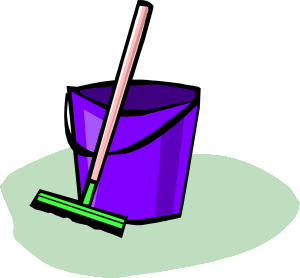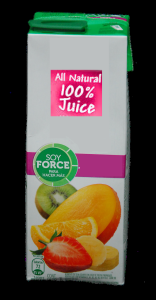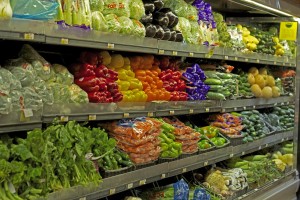Are you like me, you often feel overwhelmed with all that you read about dangerous chemicals? Sometimes I just don’t read any more. Maybe, if I just ignore it, it won’t be true…
But it is true. Sorry, I wish it wasn’t.
Stop ignoring it—keep reading. I will give you some practical advice on avoiding them and make it really simple.
First, I must tell you that we come into contact with toxic chemicals on a regular basis that may have serious health consequences for ourselves and our children. Some of the most common household products may contain harmful toxic chemicals that you need to be aware of.
If you are like most people, you don’t usually read the ingredients that are in most common household products because you have been using them for a long time. You trust that if they’re allowed to sell the product, it must be safe.
You may be shocked to know that recent studies show that toxins are now found in virtually all of us.
 While using eco-friendly products may reduce your chance of being exposed to toxins, there are also so many other ways that you could be exposed to toxins without even knowing it.
While using eco-friendly products may reduce your chance of being exposed to toxins, there are also so many other ways that you could be exposed to toxins without even knowing it.
“The Centers for Disease Control and Prevention (CDC) has identified detectable levels of Bisphenol A or BPA, in 93 percent of people tested, and Diethyl phthalate (DEP) in at least 75 percent of the population.” – parents.com
Even some of the processed food you buy from supermarkets may contain harmful additives or preservatives, such as formaldehyde or arsenic that are linked with skin, bladder, lung and kidney cancer.
So what should you do to avoid these potentially harmful chemicals?
Keep reading, we are going to discuss some of the ways you can stay safe from toxic chemicals.
How can I avoid toxic chemicals?
There are toxic chemicals found in products that you may never even suspect. Your yellow sticky notepad, cosmetics, cleaning products, detergents, food, and even your clothes contain them.
By staying informed about these products, you could avoid many serious health issues.
You should look at all labels of products that you use to see what chemicals they have, including your food. Below is a list of toxins to look for.
1. Avoid synthetic coloring
Anything with synthetic pigment could become a serious health hazard.
Synthetic coloring and pigments such as the yellow dye is found in yellow sticky notepads, yellow rubber ducks, clothing and cosmetics.
The chemical found in this dye, for example, is PCB 11 (Diarylide pigment), which is used in most common ink and related products. “PCBs cause a whole range of really worrisome health problems,” said Lisa Rodenburg, associate professor of environmental chemistry at Rutgers University (huffingtonpost.com).
Studies have found that synthetic colors may be linked to severe health problems including skin irritations, bad acne, developmental problems, birth defects and cancer.
There are also many other harmful synthetic colors. If you read your product labels and see FD&C, D&C, D&C Red 27, FD&C blue and similar notices, they represent synthetic colors.
These colors are usually derived from petroleum or coal.
2. Know what you eat
Avoid processed food with additives and preservatives.
Formaldehyde, arsenic or mercury may be present in processed fruit juice or rice products.
 Some arsenic occurs naturally in our food and some comes from pesticides that leach into the groundwater where food is grown. Make sure the food that you buy was grown on an organic farm without chemical pesticides and was stored without chemicals.
Some arsenic occurs naturally in our food and some comes from pesticides that leach into the groundwater where food is grown. Make sure the food that you buy was grown on an organic farm without chemical pesticides and was stored without chemicals.
Wash fruits with warm water after you buy them and consider using washes that are specially formulated for removing pesticides.
Avoid drinking processed juices that you are not sure of, and read labels to see if they are all natural and certified by a third party. Some labels on fruit juices may be misleading and make false claims. They could still contain lurking harmful ingredients such as formaldehyde or other forms of preservatives or additives.
Some fish grown in highly polluted areas may contain high levels of mercury. When mercury from industrial waste or pollution enters water, fish absorb it through their gills.
Know where and how your fish was grown and avoid consuming large and predatory fish, because they accumulate higher concentrations of mercury over their longer lifetimes. (Read more about eating sustainable seafood: A Guide to Eating Sustainable Seafood)
3. Use only all natural plant-based products
One fail-safe method of avoiding chemicals is to use products that are all natural and derived from plants grown with organic methods.
This goes for anything that you buy, including your cleaning products, your cosmetics, your food and so on.
Don’t just take the manufacturer’s word for it, or fall for empty marketing claims like “all natural”. Look for third party certifications.
Some of the products you use may have synthetic coloring, artificial fragrances and additives added to increase durability, flexibility and so on. These may cause allergies, irritation, skin diseases, lung diseases, birth defects, autism in children, chemical imbalances, and cancer.
For example, there are chemicals like Phthalates that are used to increase the flexibility of plastics. Or Triclosan, used in antibacterial soap, which is linked with several health hazards including disruption of your endocrine system.
When you clean your house, make sure you use all natural cleaning products. This will ensure the air quality of your home as well.
Buying all natural products, or making your own products, for your home is one of the best ways to ensure good health and safety of your family.
The Environmental Working Group has several invaluable free resources for looking up ingredients, searching the safety ratings of different products and for information on what to avoid.
Conclusion
 Think twice before you use any synthetic products, and make sure you know what is in them. Read the labels and make sure you know the side effects of the chemicals it contains.
Think twice before you use any synthetic products, and make sure you know what is in them. Read the labels and make sure you know the side effects of the chemicals it contains.
Know how your food was grown and preserved. Do not buy processed food, especially for children.
If you have an allergic reaction to any product that you are using, stop using it immediately.
If you have specific questions about avoiding dangerous chemicals, feel free to leave them in the comment box below.
Did you find this article helpful? Learn more about Environmental Professionals Network.
We would also appreciate your feedback so please put down your thoughts about this article on our Facebook page.
We will be back with more tips about your health and how to be safe from chemicals in our later blogs, so please read our blogs regularly.
Until next time, stay well and stay healthy!
Source: Environmental Professionals Network
Related articles and resources:
- A Few Good Reasons To Use Eco-Friendly Products For A Greener Home
- How to green your cleaning routine : TreeHugger
- How to Stay Safe and Avoid Toxic Injury
- Keep Your Family Safe from Toxic Chemicals: How to Reduce Your Exposure to Endocrine Disrupters
- A Guide to Eating Sustainable Seafood)
- Homemade Cleaning Recipes from all Natural Ingredients
- Naked Juice Removes “All Natural” From Label – ABC FOX Montana Local News, Weather, Sports KTMF | KWYB




Hi ! my name is Steffani and I am the owner and Skin guru behind VariableFunkSkin on Etsy which is a Totally Natural Skin and Body care line, I also dnotae 5% of each product sale to the World Wildlife foundation. I LOVE your channel and would love to send you a gift package to do a review and spread the love ..what do you think! Thank you so much for your awesome Channel! xoox Steffani
Thanks for your kind words